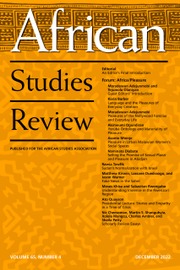I was happy to accept the offer to review Mariusz Lukasiewicz’s book, as it was on my “to-read” list. The book is written in a language that is accessible to everyone, and reading it was a pleasure.
In International Relations and International Political Economy, we often refer to the concentration of financial resources in South Africa, especially in the context of the existence of Africa’s oldest and largest stock exchange in Johannesburg. Before reading Lukasiewicz’s book, I assumed that gold and diamonds played a key role in the interference of external forces in the politics and economy of South Africa in the late nineteenth and early twentieth centuries. To be honest, I had overlooked the role of international financial markets in these historical processes. I simply assumed that the largest and oldest stock market in Africa was a “by-product” of gold and diamond mining in the region. In my view, examining history from the perspective of the financial market is both novel and remarkable.
Lukasiewicz traces the processes that led to the emergence and development of the financial market in southern Africa, but, more importantly, he highlights the role international financial markets have played in South Africa’s history.
I believe the book’s most important contribution to the discourse is its demonstration of how South Africa’s financial sector was institutionalized, and how its development correlated not only with British imperialism, but also with the formation of the global capitalist system. I view this as a more significant scholarly achievement than offering an understanding of important historical events (such as the Jameson Raid) from the perspective of the formation and functioning of the Johannesburg Stock Exchange.
Other reviews of Lukasiewicz’s book have emphasized the richness of primary sources on which the work is based. I agree with these reviewers—source triangulation undoubtedly took place during the research for this monograph. I also appreciate the author’s thoughtful approach to defining the terms he uses in the work and his recognition of their multidimensionality.
Although the book is dedicated to history, its links to the current sociopolitical and economic situation in South Africa are all too obvious.
The author’s main aim was to demonstrate the connection between finance and imperialism, but he also highlighted many other aspects of the development and operation of the South African financial market that still have consequences today. No matter how colloquial it may sound, Lukasiewicz’s work proves that capital has, and continues to have, a nationality. When capital is internalized, it can be multiplied at the “place of internalization” for the benefit of that very “place”—but only if the “place” has a vision of how it should function.
Lukasiewicz further shows that without a local source of capital, it is difficult to carry out the industrialization process. He demonstrates the crucial role played by the Johannesburg Stock Exchange (JSE) in “raising capital and forging international networks” that enabled industrialization in the South African Republic (ZAR). I understand that drawing analogies between the late nineteenth century and the present can be difficult, but the JSE experience should at least be considered as one avenue in the quest to raise capital for sub-Saharan resource-rich states facing capital shortages—especially in the context of discussions around resource nationalism.
In this regard, what may be slightly disappointing (though this does not diminish my high rating of the book) is the book’s conclusions, which I feel could be more far-reaching. In principle, many of the issues raised in the introduction (such as populism, the spread of violence in South Africa, and inequality) could have been explored further in the conclusion. My main suggestion would be for Lukasiewicz to address the question: What can a historical perspective tell us about the contemporary functioning of not only South Africa, but other sub-Saharan, natural resource-rich states suffering from a lack of capital? Perhaps this could form the basis for an article in which the author explores whether the mechanisms that governed the world economy more than a century ago have been reproduced, and how their consequences are still evident today.
In conclusion, I believe that Mariusz Lukasiewicz’s book is not only an important contribution to debates on the history of South Africa; it also disentangles the relationship between private capital, British imperialism, and Boer republicanism. Furthermore, I see the potential for further research that could offer deeper insights into the political economy of natural resources in sub-Saharan Africa.


